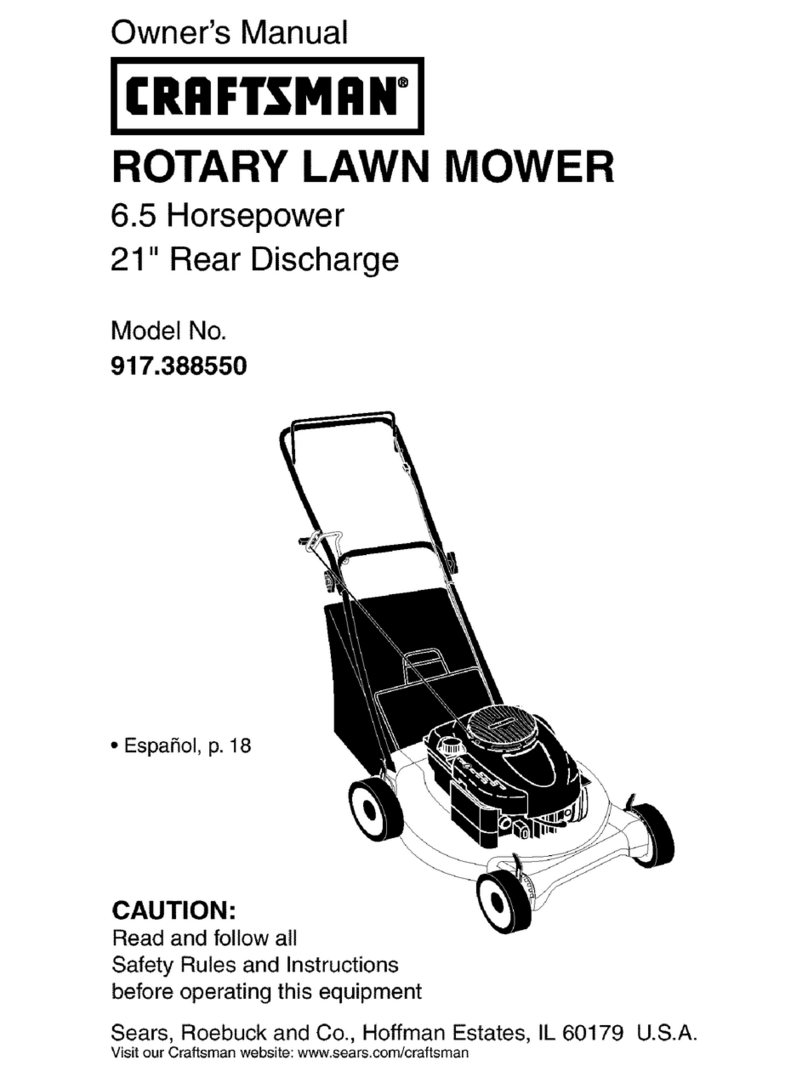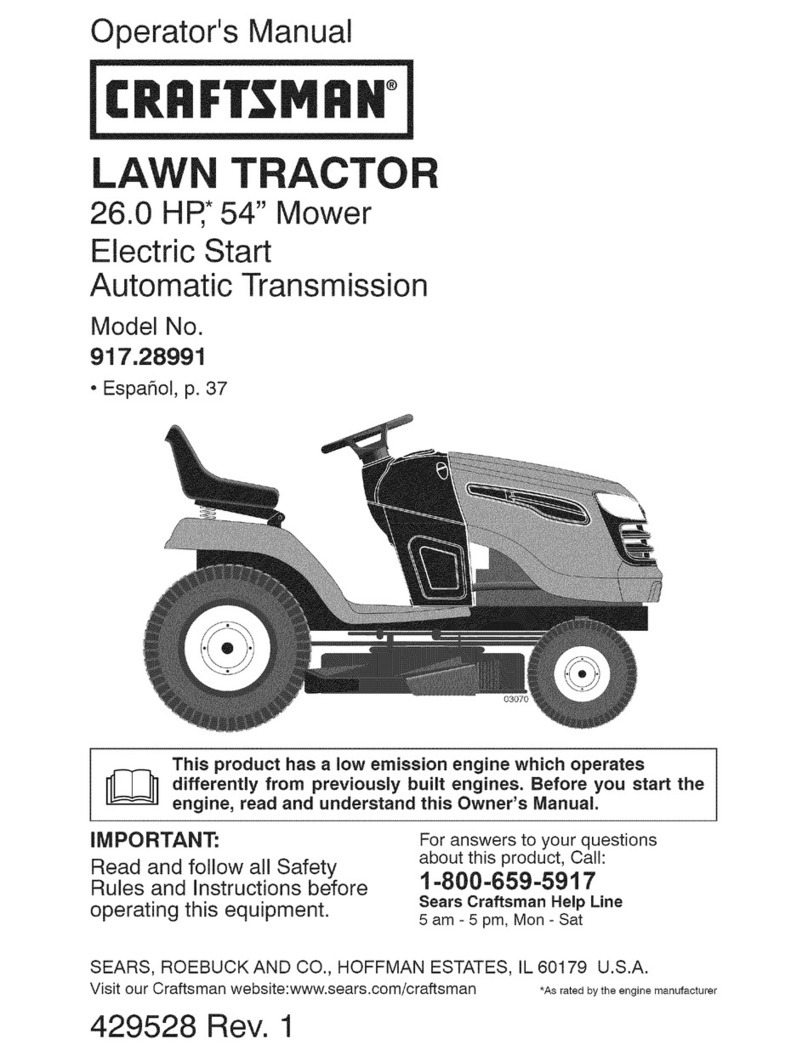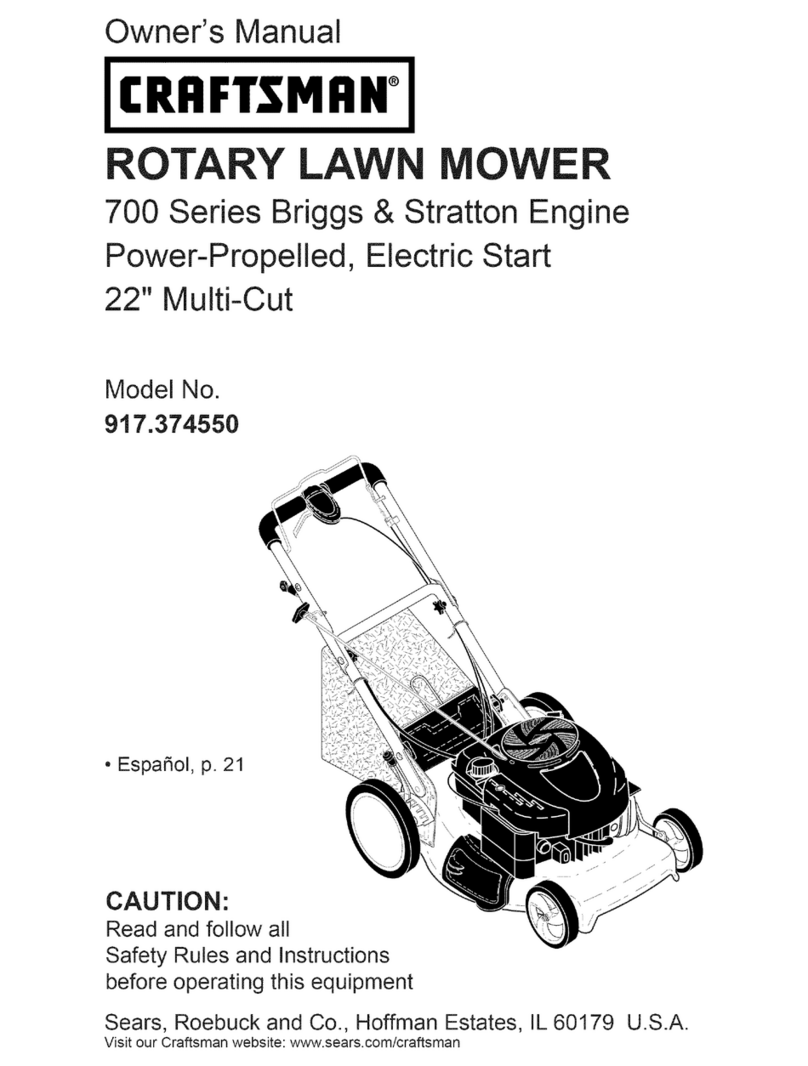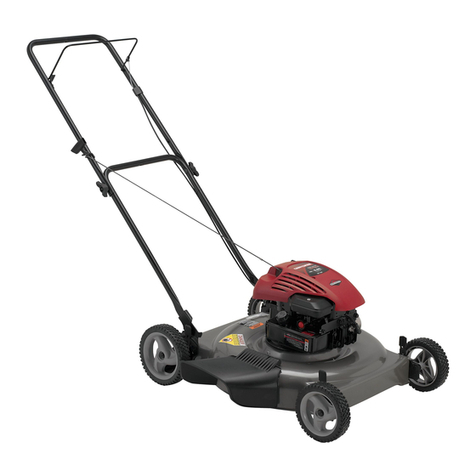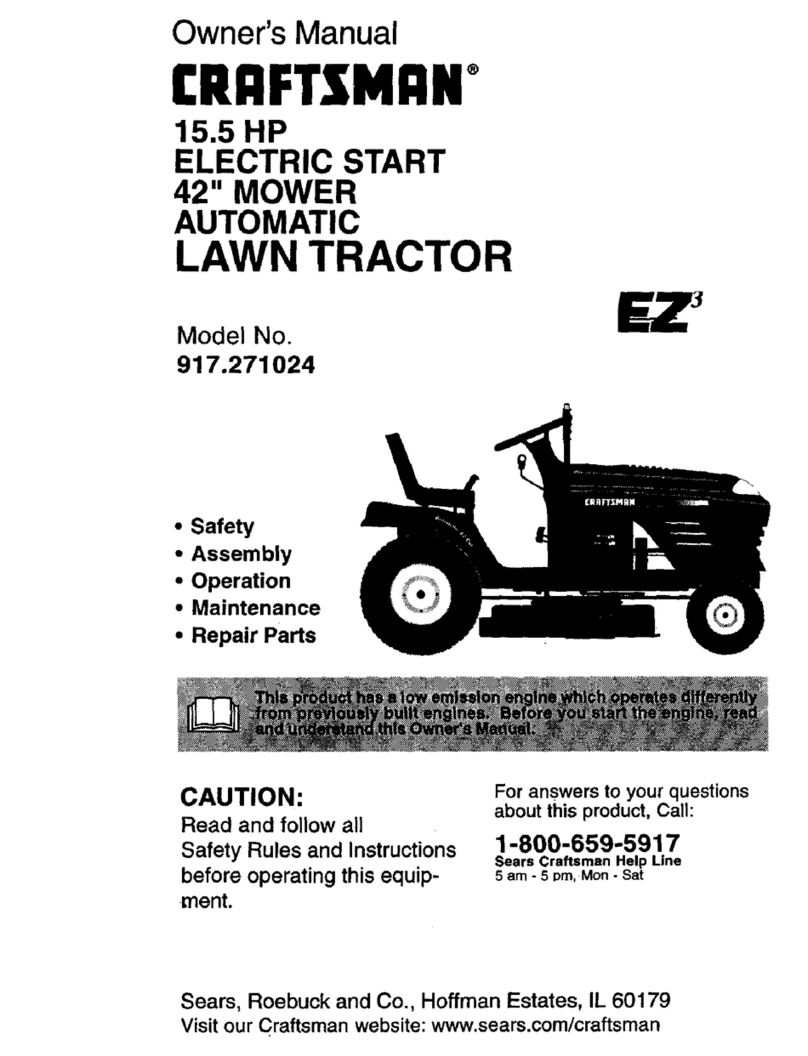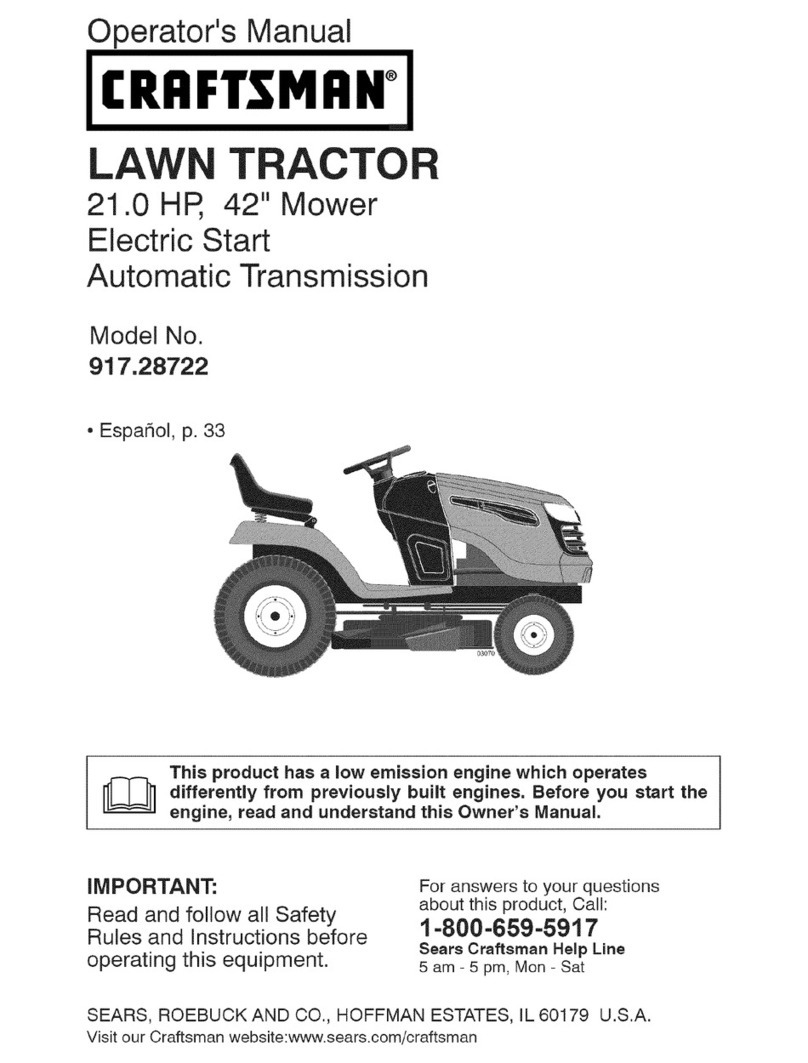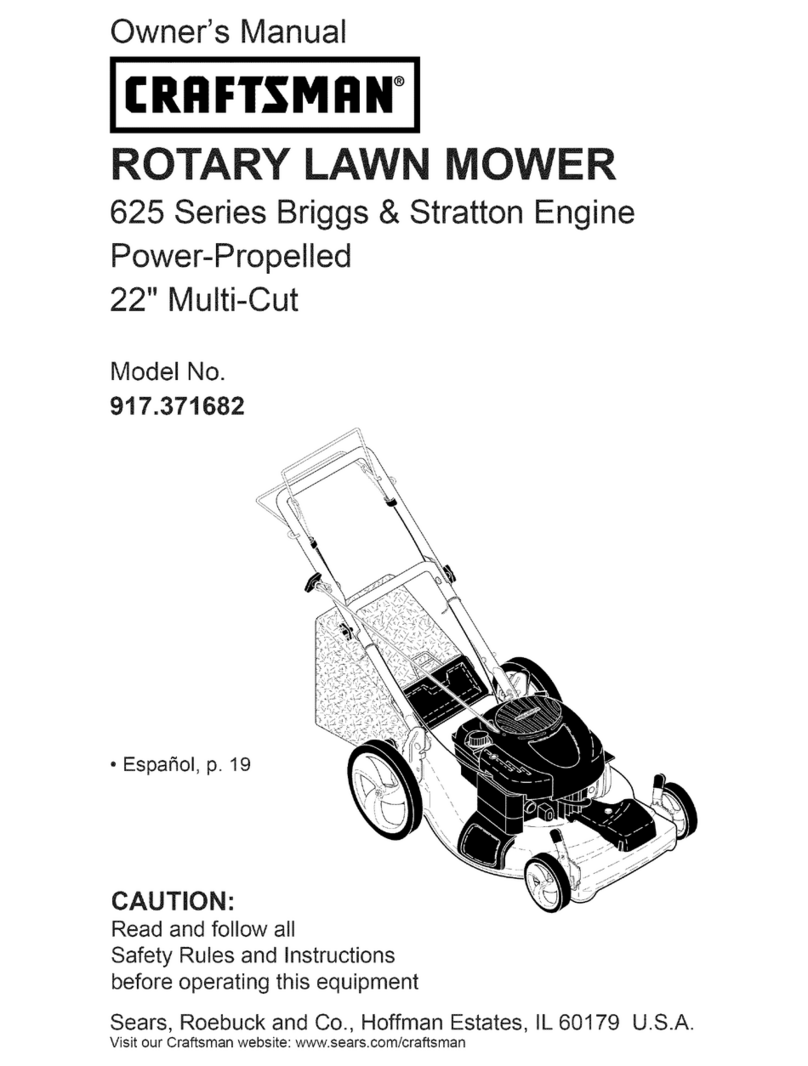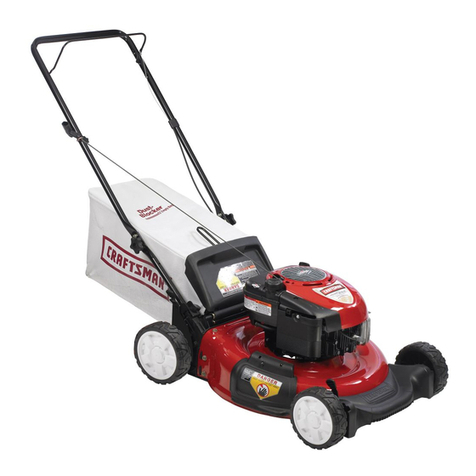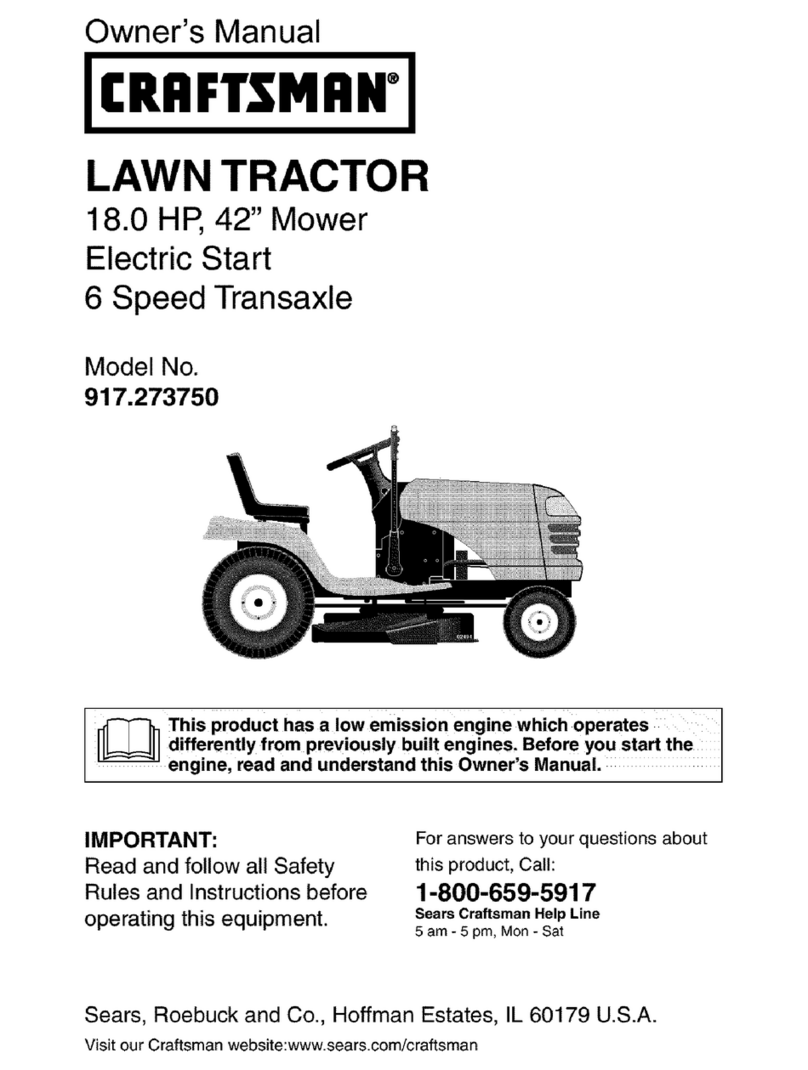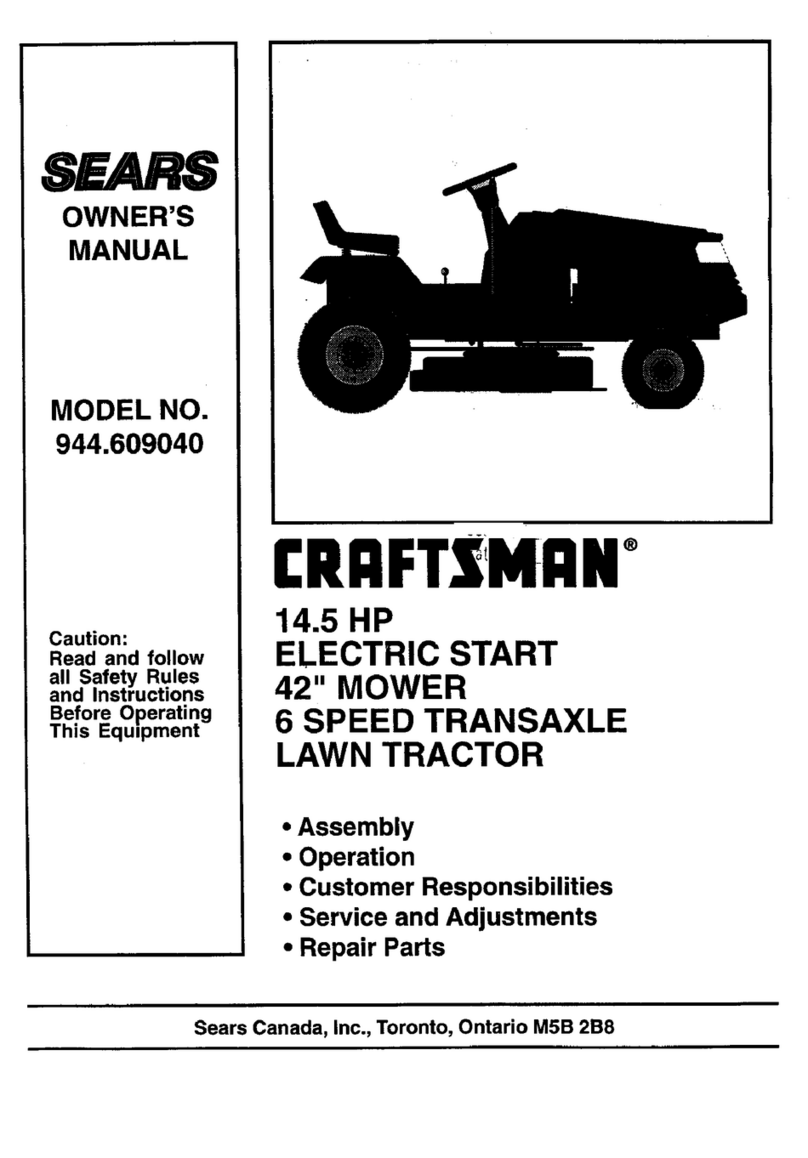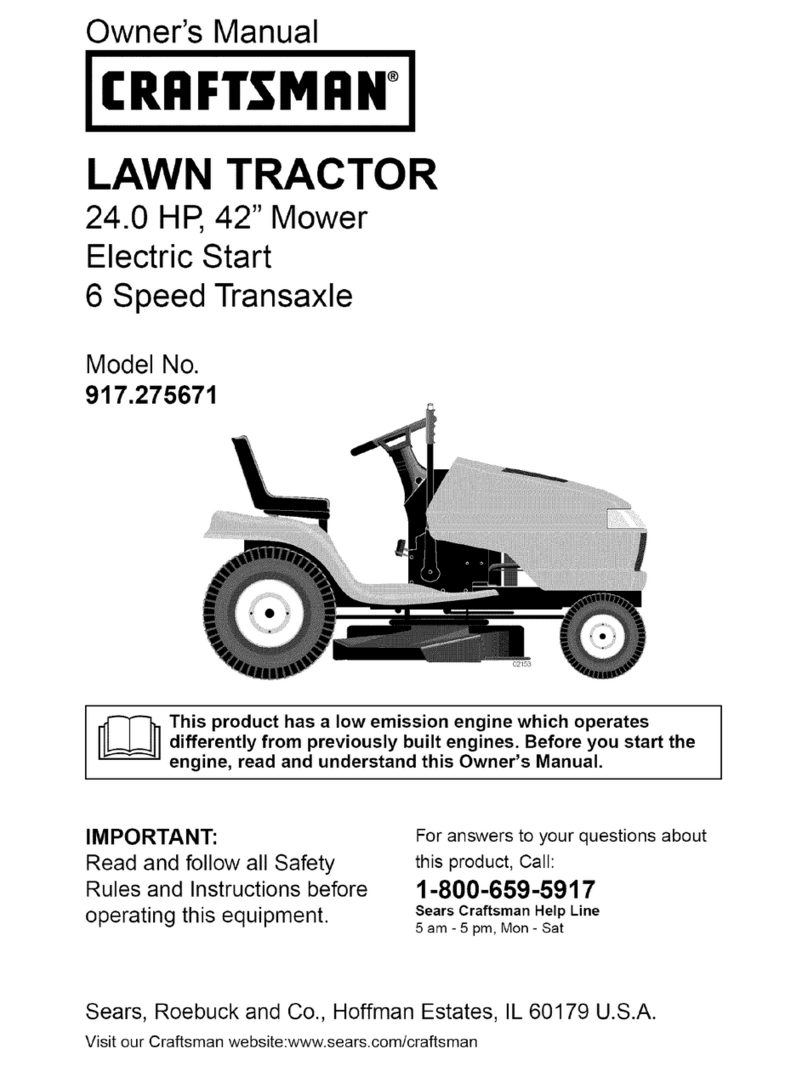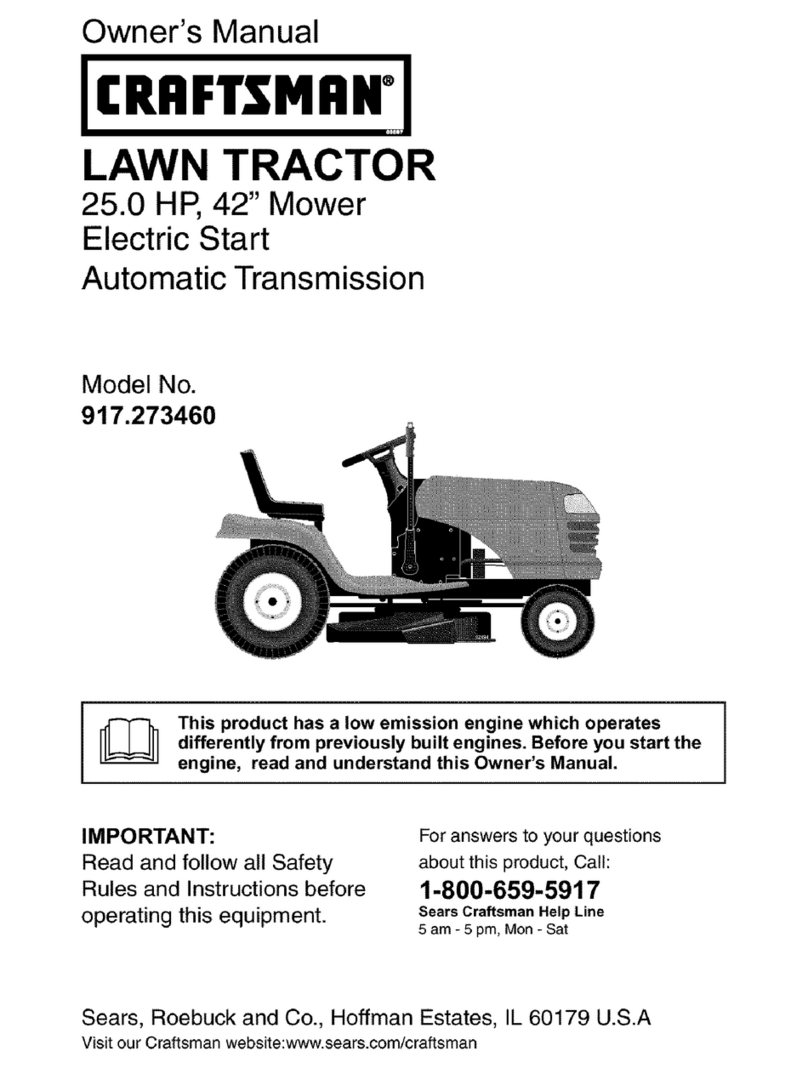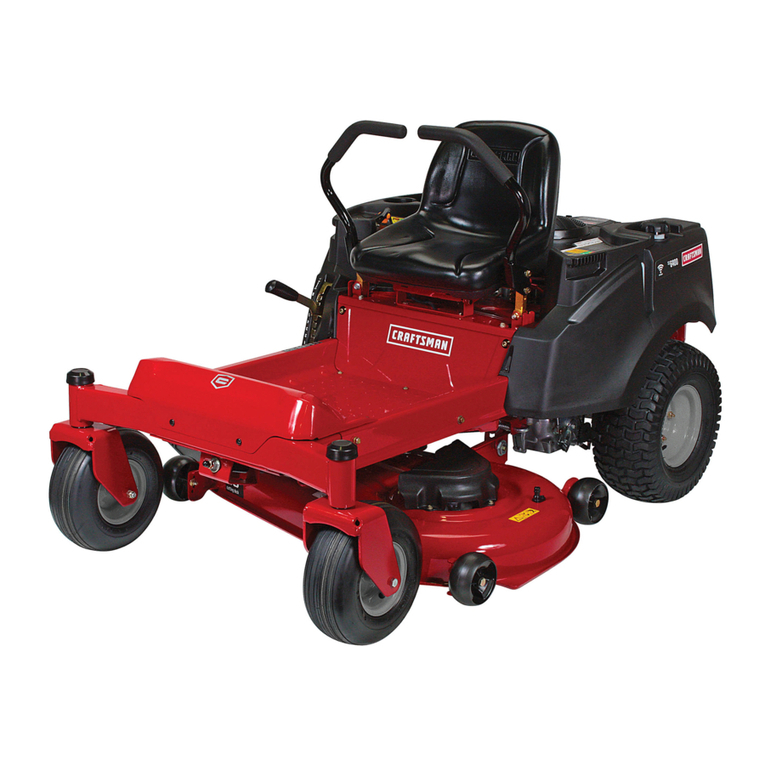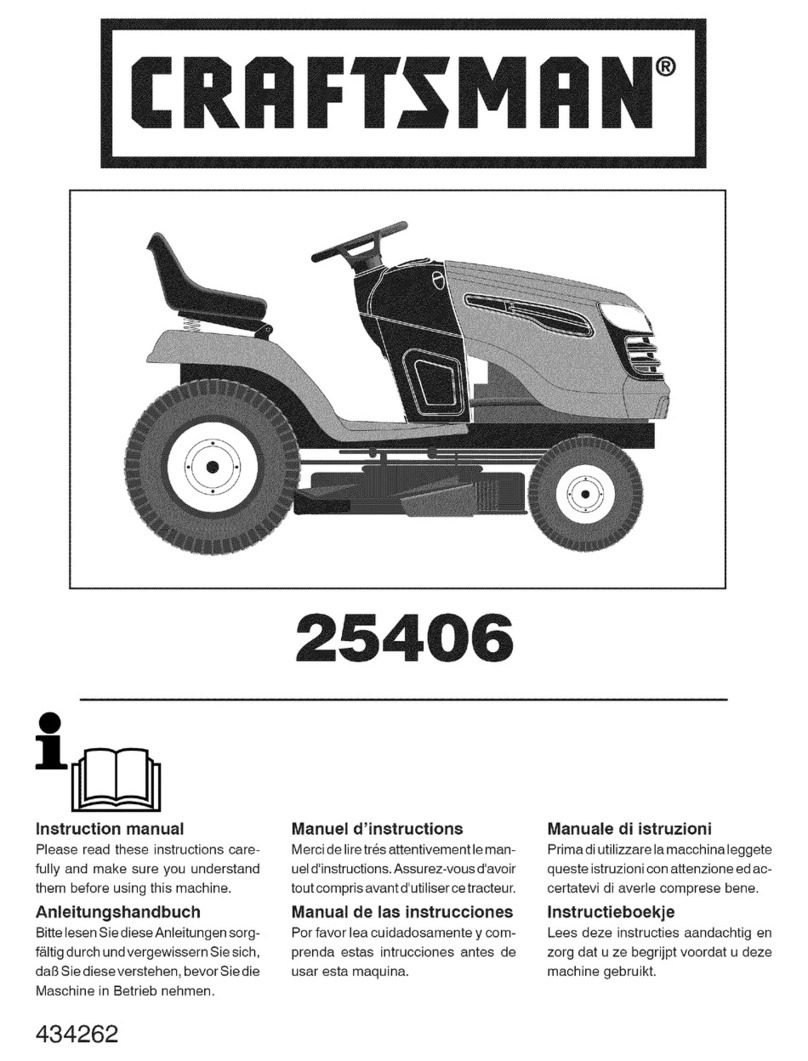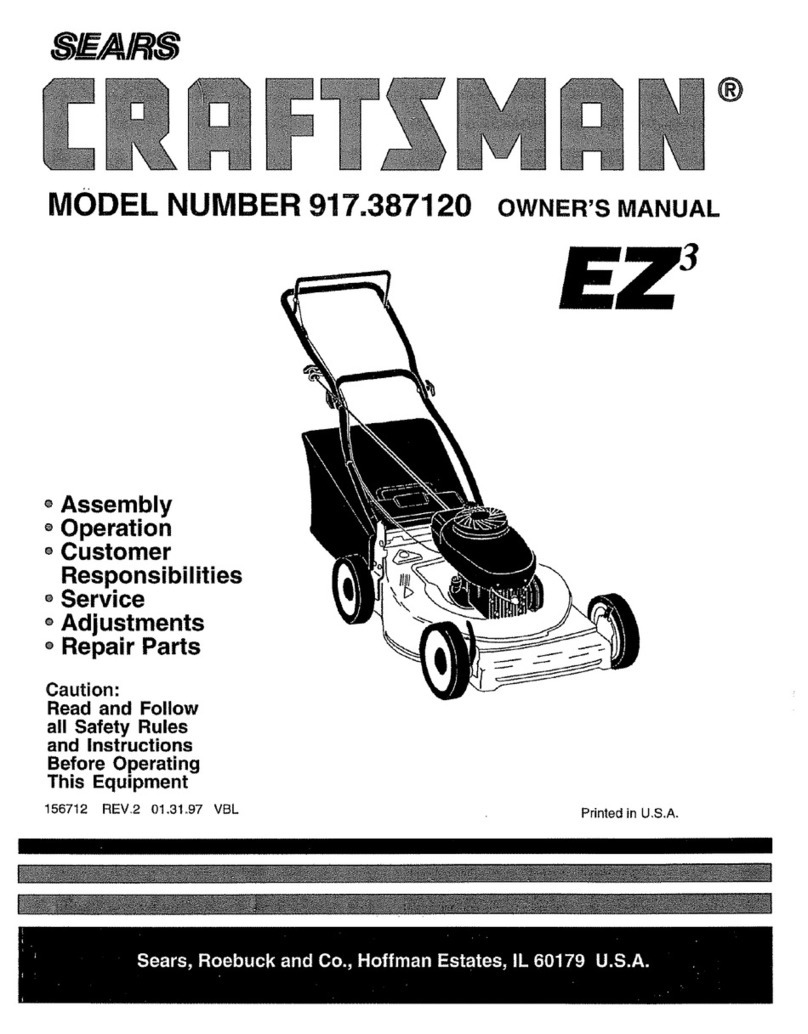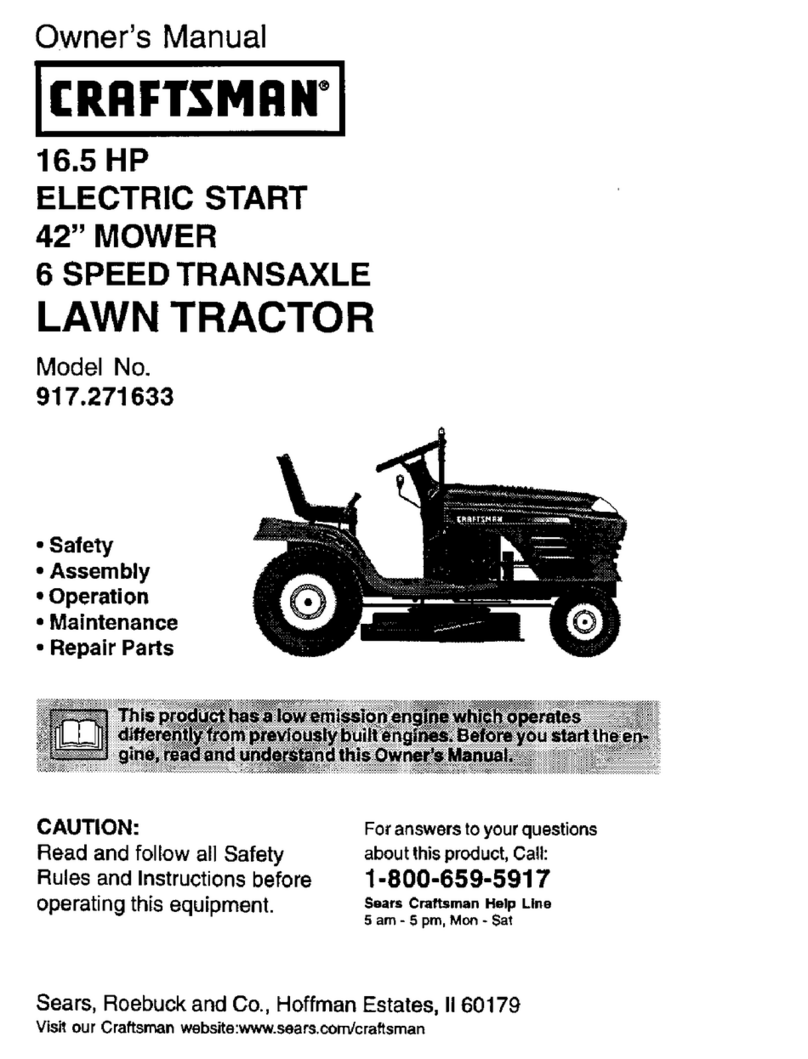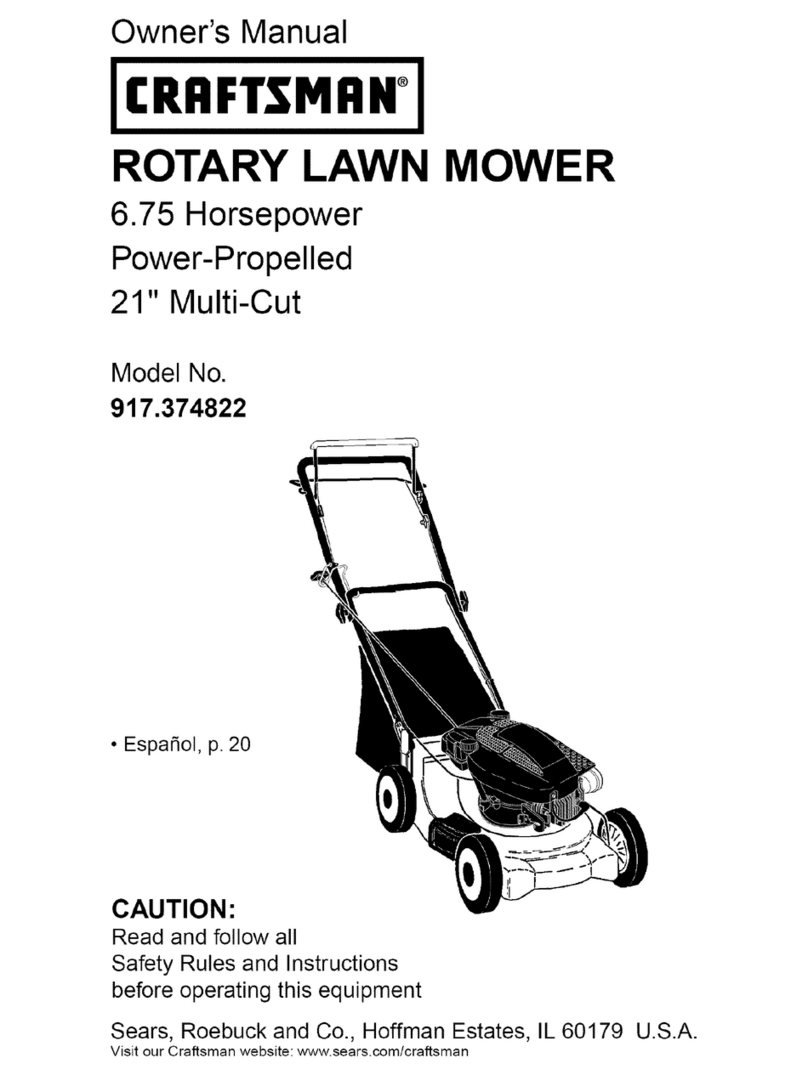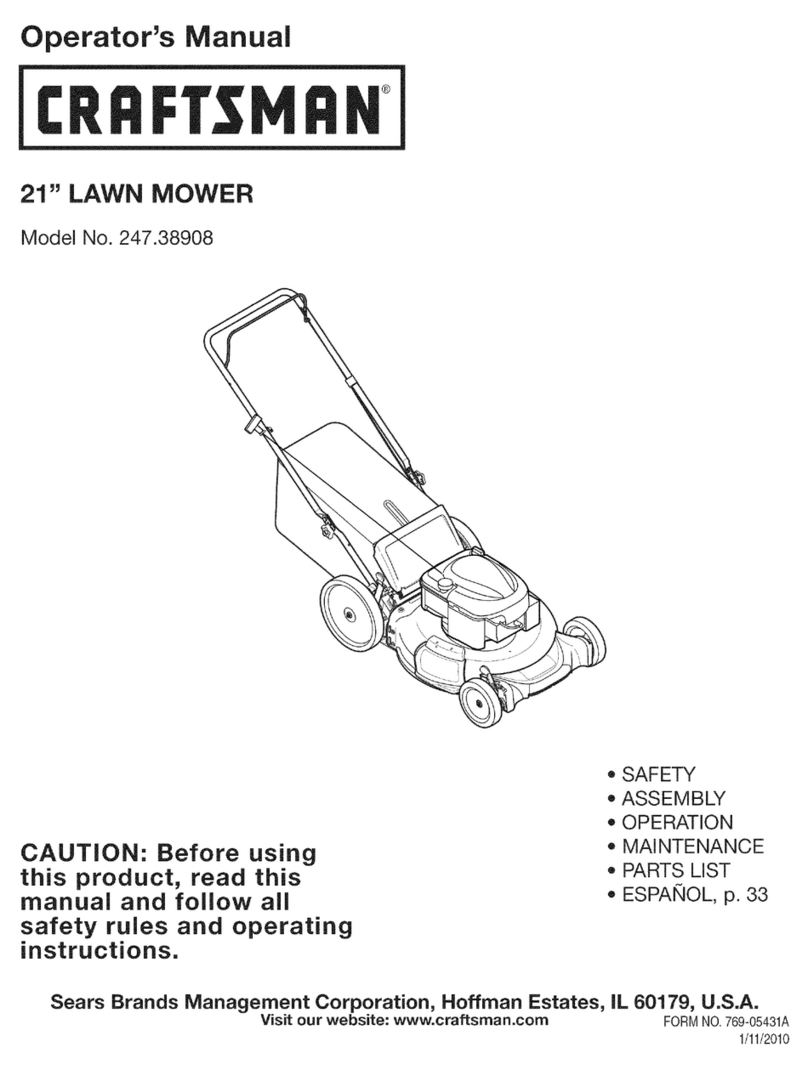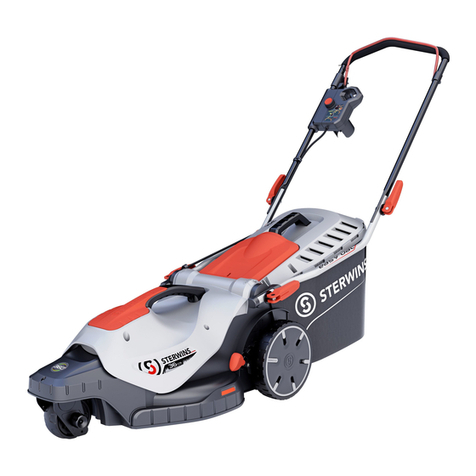IMPORTANT: This cutting machine iscapable of amputating hands and feet and
throwing ob ects. Failure to observe the following safety instructions could result in
serious injury or death.
I.GENERAL OPERATION
•Read, understand, and followall
instructions in the manual and on the
machine before starting.
• Only aTTowresponsibre adults, who are
familiar with the instructions, to operate
the machine.
• Clear the area of objects such as rocks,
toys, wire, etc., which could be picked
up and thrown by the blade.
•Be sure the area is clear of other people
before mowing. Stop machine if anyone
enters the area.
• Never carry passengers.
•Do not mow in reverse unless absolutely
necessary. Always lookdown and
behind before and while backing.
•Be aware of the mowerdischarge
directionand do notpointit at anyone.
Do not operate the mower without either
the entiregrass catcher or the guard in
place.
• Slow down before turning,
•Never leave arunningmachine
unattended. Always turnoff blades, set
parkingbrake, stop engine, and remove
keys before dismounting.
•Turn off blades when not mowing.
•Stop engine before removinggrass
catcher or uncloggingchute.
• Mow only in daylightor good artificial
light.
•Do not operate the machine while under
the influenceof alcoholor drugs.
•Watch fortrafficwhen operating near or
crossing roadways.
•Use extra care when loadingor unload-
ing the machine intoa traileror truck.
•Data indicatesthat operators, age 60
years and above, are involved in alarge
percentage of dd[ng mower-related
injuries. These operators should
evaluate their ability to operate the riding
mower safely enough to protect them-
selves and others from sehous injury.
• Keep machine free of grass, leaves or
other debds build-up which can touch
hot exhaust /engine parts and bum. Do
not allow the mower deck to plow leaves
or other debris which can cause build-
up to occur. Clean any oil or fuel
spillagebefore operating or stodngthe
machine. Allow machine to cool before
storage.
II. SLOPE OPERATION
Slopes are a major factor related to loss-of-
control and tipover accidents, whichcan re-
sult in severe injury or death. All slopes
requireextra caution. Ifyou cannot back up
the slope or if you feel uneasy on it, do not
mow it.
DO:
•Mow up and down slopes, not across.
•Remove obstacles such as rocks, tree
limbs,etc.
• Watch for holes, ruts, or bumps. Uneven
terrain could overtumthe machine. Tall
grass can hide obstacles.
• Use slow speed. Choose a low gear so
that you will not have to stop or shift
while on the slope.
• Follow the manufacturer's recommenda-
tions for wheel weights or counter-
weights to improve stability.
• Use extra care with grass catchers or
other attachments. These can change
the stability of the machine.
•Keep all movement on the slopes slow
and gradual. Do not make sudden
changes in speed or direction.
• Avoid starting or stopping on aslope. If
tires lose traction, disengage the blades
and proceed slowly straightdown the
slope.
DO NOT:
•Do not turn on slopes unless necessary,
and then, tum slowly and gradually
downhill,ff possible.
• Do not mow near drop-offs, ditches, or
embankments. The mower could
suddenly turn over if a wheel is over the
edge of acliffor ditch, or if an edge
caves In.
•Do notmow on wet grass. Reduced
traction could cause sliding.
• DO not try to stabilizethe machine by
puttingyour foot on the ground.
•Do notuse grass catcheron steep
slopes.
